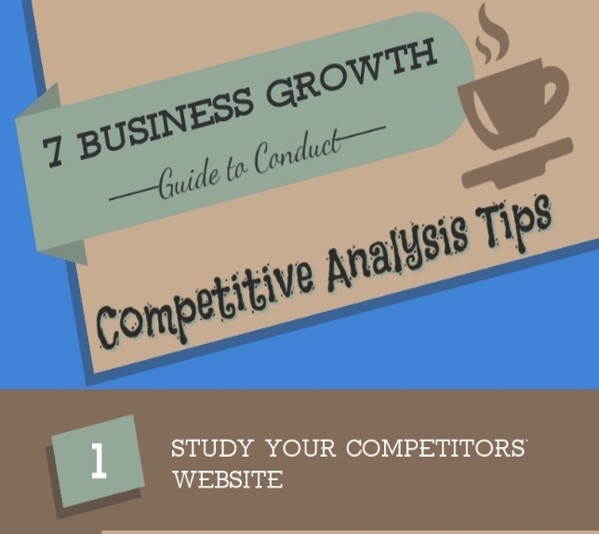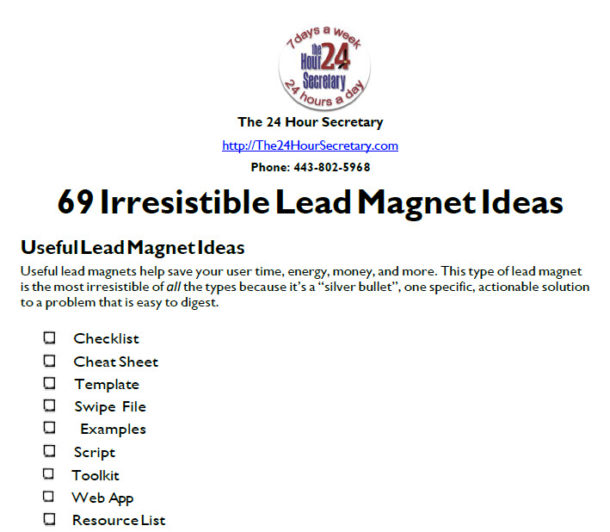Call us at: 1-888-254-7636

How Competitive Analysis Can Positively Help Business Growth
Many small business owners are not aware of the importance of conducting a competitive analysis of the competition. Others are aware it is a useful tool in determining your company’s strengths and weaknesses. It is a very important goal and marketing strategy tool.
There are dozens, even hundreds of companies offering a similar product or service as you. What makes you stand out more than your competitors? A competitive analysis can help answer these questions.
What is a Competitive Analysis?
Competitive analysis is an assessment of the strengths and weaknesses of current and potential competitors. This analysis provides an offensive and defensive chance to identify opportunities and threats.
It is an important business tool used to identify, achieve and maintain an advantage in reaching and selling to your target market.
The results of conducting a competitive analysis could be very important. They help you position yourself against the competition and identify differentiators that help attract your ideal client. Conducting this study can assist with establishing or gaining an edge by simply collecting useful information.
How Do You Identify Your Competition?
You can probably rattle off a few competitors because you travel in the same circles or network together. Don’t depend on your memory to identify them.
Frankly, they may not really be your true competitors, and/or there may be several more.
A quick way to identify your competitors is to do a quick Google search. That’s right! Enter the type of service or product you are offering, it’s likely a few of your top competitors will appear.
Another method you can use is online tools such as SEM Rush. SEM Rush gives you a look into what other companies are ranking for your keyword. It also shows how you rank against them. Other resources you can use to dig up information on your competitors include Alexa, Keyword Spy, Hoovers, Ahrefs and ReferenceUSA.
Where Do You Find Out About the Competition?
Download this checklist infographic that identifies low-cost research resources entrepreneurs can use to identify the competition and collect important business data for conducting a competitive analysis.

I want the 7 Competitive Analysis Tips and a Competitive Analysis Template to summarize the collected results.
Join Smart Business = Success ezine for business tips and marketing strategies.
You have Successfully Subscribed!
Other methods you can use to identify competitors include:
- Local business directories
- Your local Chamber of Commerce
- Advertising
- Press reports
- Exhibitions and trade fairs
- Questionnaires
- Searching on the Internet for similar services
- Information provided by customers
- Flyers and marketing literature that have been sent to you
Questions to Ask Yourself…
You’ve identified your top list of competitors. Now it’s time to review their website and other public information. There is important information that you should collect that will help you identify their strengths and weaknesses. This data gives you a clear path to differentiate your business.
For example:
- What products or services do they sell?
- What is each competitor’s market share?
- What price points do they sell their products or services at?
- What are their past strategies?
- What are their current strategies?
- What type of methods are used to market their products or services?
- What are each competitor’s strengths and weaknesses?
- What potential threats do your competitors pose?
- What potential opportunities do they make available for you?
The long and short, for those who do not have time to conduct an extensive competitive analysis (or lack funds or desire to hire a professional virtual assistant to conduct one) answer the three questions below:
-
- What are customers really buying from them? Are they going for price? Experience?
-
- How are they differentiating their product from their competition? What features and benefits do they highlight the most in their marketing copy?
- What makes their product or service unique (according to them)?
Additional areas to review when conducting an In-depth competitive analysis includes evaluating content, social media, SEO and keywords.
Using Content in Competitive Analysis
Content is another resource your competitors create that you could review. You can determine the quality and most importantly you can see how it compares to yours.
Content analysis, including frequency of postings, updating content, topics they cover etc., helps you identify opportunities to outperform your competitors. It also shows what they are doing that you are not. Content analysis can show where to put in more effort and resources.
Resource: 4 Important Elements of a Powerful Lead Magnet
Once you’ve identified content that is collecting results, you may create lead magnets that can also draw customers to your products or services. Click here to identify four important elements of a powerful lead magnet.
Various types of content include:
- Blog posts
- Whitepapers
- eBooks
- Videos
- Webinars
- Podcasts
- Slides/PowerPoint
- Visual content
- FAQs
- Feature articles
- Press releases
- News
- Case studies
- Buyer guides

69 Powerful
Lead Magnet Ideas
These useful lead magnet ideas save you time, energy, money and more. These are the most irresistible of all the types because it’s a “silver bullet”, one specific, actionable solution to a problem that is easy to digest.
You have Successfully Subscribed!
Note, generating more traffic to your site is important, but making sure your content is relevant and on point is critical. Download 69 Powerful Lead Magnet Ideas for more examples of content you can create for connecting connect with potential customers and capturing their contact information.
SEO and Keywords are Important
If you blog, it is beneficial to check the SEO structure and keywords of your competitors’ content. Those terms can help with generating a list of additional keywords that you can begin targeting.
Review the following:
- The page title
- The URL
- H1 Tags
- Image ALT text tags
- Content
- Internal links
- External links
- Keyword density in the copy itself
Social Media and Competitive Analysis
The next step of your competitive analysis is to determine how your competitors are using social media and integrating it into their marketing.
It is important to see if your competitors can be found on social media platforms. Plus, see how effectively they’re using their profiles. Consider how their target audience responds to what they are posting.
Do they post and how often? Are people following them? Do they have cover photos and profile photos? Check the number of comments, shares, and likes on your competitors’ content.
Ask yourself, are there things you could utilize or ideas that can help establish your presence?
Additional Competitive Analysis Tool
Another tool to use in conducting competitive analysis is your customers. Ask them to rank your business in the following areas compared to your competition:
Rate the following as: fair, good or excellent. Our Company / Competition ___________ /__________ Price ___________ /__________ Quality ___________ /__________ Durability ___________ /__________ Image/style ___________ /__________ Value ___________ /__________ Name Recognition ___________ /__________ Customer Service ___________ /__________ Customer Relations ___________ /__________ Location ___________ /__________ Convenience ___________ /__________ Other
One more option is to interview your customers, suppliers, and industry experts about your competition’s product and service.
Conclusion
Okay, you’ve collected a ton of data. Now identify at least one particular area that needs improvement. Website information, content creation, search engine optimization and/or social media engagement can all help increase your business presence with potential customers.
Finally, summarize the major problems and opportunities facing your business. Which ones require action and implementation of a marketing strategy that will strengthen your market position.
Conducting a competitive analysis is not a one-time activity. It should be done on a regular basis. Complete it as part of your evaluating your business, its growth, and development. To understand your marketing position, you must evaluate and understand your competitors’ position, too.
To pull this all together, when you download the 7 Competitive Analysis Tips, don’t forget to download a Competitor Analysis Template to get you started.
If you want help or more information, schedule a FREE 15-minute discovery call to find out how I can help you conduct a competitive analysis.
Don’t forget to subscribe to Smart Business = Success, our ezine for more thought-provoking content, and business and marketing tips and secrets.






